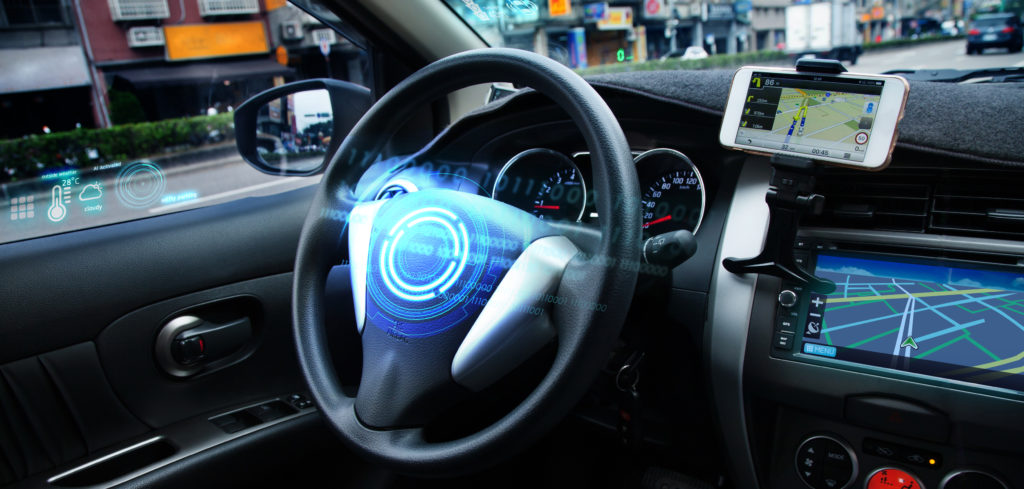Laurence Weir, technology implementation lead at design and engineering consultancy Plextek, reacts to the recent media storm over hands-free cars ‘coming soon’
The UK government has pledged to start the legal process of getting hands-free cars on motorways early next year. This is a development which follows similar announcements in many other countries. So, what are hands-free cars, and why is their implementation so important?
A stepping stone: hands free doesn’t mean driverless
First things first – hands-free cars are not driverless cars. While the car is in hands-free mode, the driver must stay in the driver’s seat, alert to the road, having to take over manual control at any time the onboard computer deems necessary. So, what are the advantages of these cars? It’s not as if the driver can use this time to be catching up on their email backlog, or buying Christmas presents online, saving them precious time in a busy schedule. Except for avoiding accidents, which luckily is an uncommon event for most of us, they offer no real benefits to drivers.
Therefore, I would describe hands-free cars as a stepping-stone technology.
The sub-conscious mind and safety first
Have you ever got to the end of a car journey, and realized that you don’t remember most of it? It has been widely researched that driving does not use the conscious part of the brain, which we have for many complex tasks. In fact, your sub-conscious drives you to work each day. It can do this because it knows the route, it knows the internal control loops of how to drive, and it knows to wake you up in a split second if anything unexpected happens. It has been seen that for drivers of hands-free cars, this is changed somewhat. When the sub-conscious is not being used to drive the car, the driver can switch off more parts of the brain, meaning rapidly turning the conscious back on can take longer.
Regardless, hands-free cars do offer increased safety features. These cars are packed with interconnected radars, cameras and sensors, which detect many visible and invisible threats. Plextek has a track record of developing and implementing these radar and sensor technologies. Situations include tracking a heat signature moving quickly toward the road hidden in bushes or detecting small children moving out between parked cars. They can even detect sudden changes in speed by vehicles further on down the road, and so automatically take counter maneuvers to avoid a collision.
These sensors may outperform humans in many respects. Unfortunately, the opposite can also be true. Certain events are either too abstract or highly unusual. These events to a human are perceived as obviously dangerous, but can completely escape the detection algorithms of a computer. It would be completely unacceptable to the public to have cars driving around causing avoidable fatalities, even if the total number of accidents was much lower than we currently see.
Data, time and experience is key
What needs to happen to overcome these issues is data and time. Cases of accidents and near misses in hands-free cars are required just so these fringe cases can be analyzed and overcome. This could be by the addition of new sensors, or repositioning and reprogramming of existing systems. In any case, this data will iron out most of the cases which would scupper the use of fully autonomous vehicles right now.
Clearly, motorways are the first step in this process, being the most stable and repeatable of driving experiences. We may get to a stage in 5-10 years where motorways are able to go fully autonomous, and other roads become hands-free. The ‘holy grail’ will be achieved when we get to fully autonomous driving in the coming years and decades. This will lead to safer, rapid and more efficient road use.
There will be benefits, but cars are a ‘license’ to kill – so tread carefully
On the downside, due to the reliance on driving and drivers right now, millions of jobs will be eradicated in just a few years. However, from an economic productivity viewpoint, it will seem like a golden age of growth. The roads will be made safe as vehicles will accommodate people and move around them. Commutes will change from stressful, traffic-ridden affairs, to a chance to catch up with correspondences or read a book. People will be able to live rurally, knowing transportation connectivity is not an issue, or in cities, given traffic is non-existent. The benefits will be countless. All we need to get there is to get driving semi-autonomous vehicles, very carefully, for the next few years.


